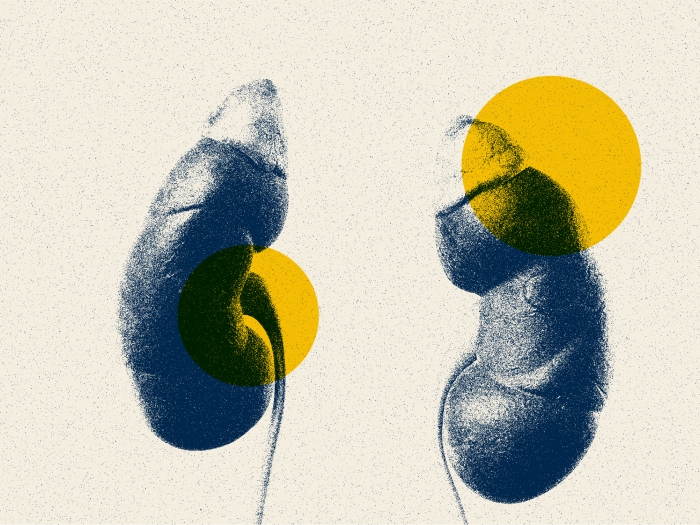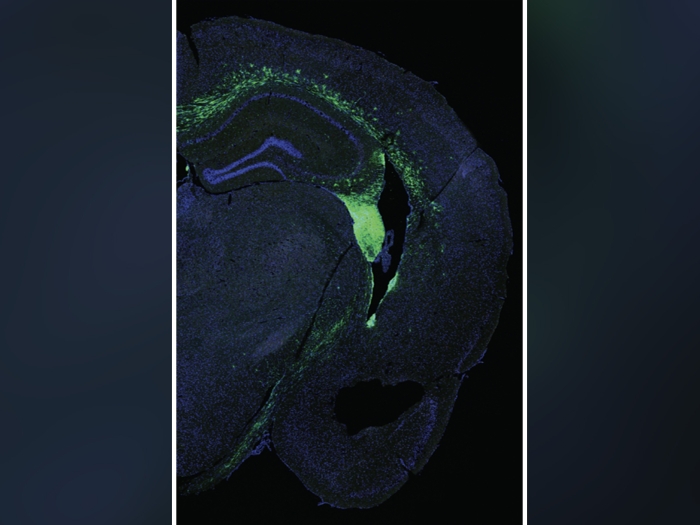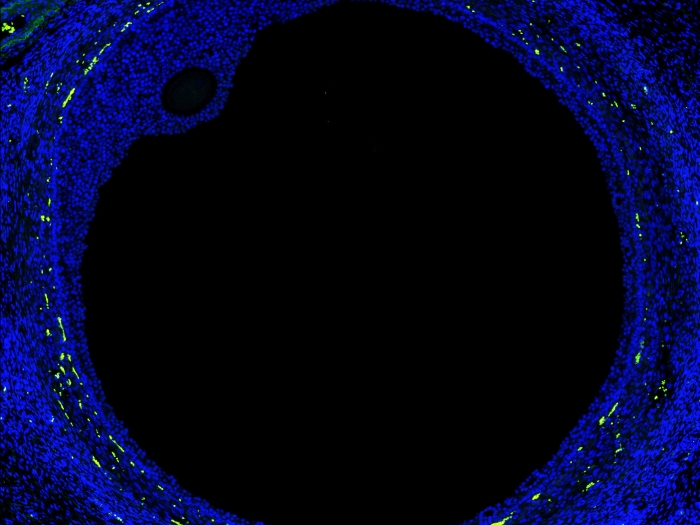Inhibiting IRE1α, a molecule activated by the endoplasmic reticulum in neutrophils, counters disease progression in lupus mice.
12:37 PM
Author |

A recent study published in JCI found that a neutrophil's endoplasmic reticulum, the organelle that normally makes proteins in the cell, becomes stressed in the autoimmune disorder lupus. This stress activates a molecule called IRE1α, which appears to play a critical role in lupus pathogenesis in mice.
A multidisciplinary research group at the University of Michigan, spanning microbiology, dermatology and rheumatology, discovered that IRE1α orchestrates the release of neutrophil extracellular traps, or NETs, from lupus neutrophils. NETs are sticky, spider web-like structures that cause inflammation when released at the wrong time or in the wrong place.
NETs play an important role in the pathogenesis of lupus and other autoimmune diseases, where they trigger autoantibody formation and contribute to blood vessel clotting and damage.
Thanks to the previous work of study authors Basel Abuaita, Ph.D. and Mary X. O'Riordan, Ph.D., microbiologists and immunologists at Michigan Medicine, the research group knew that the IRE1α pathway was important for neutrophil activation in models of another potentially deadly disease, Staphylococcus aureus infection.
"Given that neutrophils are over-activated in lupus, we hypothesized that the IRE1α pathway might be part of the story in this disease, too," says Gautam Sule, Ph.D., a postdoctoral fellow in rheumatology at Michigan Medicine. "It's what prompted this collaboration, and the result was the discovery of an abnormally activated IRE1α pathway in lupus patient neutrophils, which tracks closely with disease severity."
MORE FROM THE LAB: Subscribe to our weekly newsletter
However, this new study posed unique challenges, because according to study author Jason S. Knight, M.D., Ph.D., a rheumatologist at Michigan Medicine, neutrophils aren't easy to study.
This project wouldn't have been possible if either one of our groups had tried to go at it alone.Jason S. Knight, M.D., Ph.D.
"Although neutrophils are the most common white blood cells in circulation, they're hard to work with in the laboratory because they don't live long and there isn't a good cell line system to replicate their functions," he says.
This meant the research team had to purify neutrophils from human blood on a daily basis for their experiments but, luckily, the work paid off.
While the team now understands more about neutrophil biology in lupus, they say there's still more digging to do and the next steps will include an analysis of a larger group of patients with lupus, and likely other related diseases such as antiphospholipid syndrome.
"This was a great partnership of basic cell biologists and translational scientists. This project wouldn't have been possible if either one of our groups had tried to go at it alone," says Knight. "We're lucky to be at a place like U-M where these partnerships are not only possible but actively encouraged."
Like Podcasts? Add the Michigan Medicine News Break on iTunes, Google Podcast or anywhere you listen to podcasts.
Additional study authors include Paul A. Steffes, M.D., Andrew T. Fernandes, Shanea K. Estes, M.L.I., Craig J. Dobry, Ph.D., Deepika Pandian, Johann E. Gudjonsson, M.D., Ph.D., and J. Michelle Kahlenberg, M.D., Ph.D.
The work was supported by the Burroughs Wellcome Fund, the National Center for Advancing Translational Sciences of the National Institutes of Health, the Taubman Medical Research Institute Innovation Program, the Lupus Research Alliance and the Postdoctoral Translational Scholars Program Fellowship Award. Grant numbers include NIH R21AI135403, NIH R01HL134846, 2UL1TR000433, NIH-P30AR075043, NIH R01AR071384 and NIH R01AI130025.
Paper cited: "Endoplasmic reticulum stress sensor IRE1α propels neutrophil hyperactivity in lupus," JCI. DOI: 10.1172/JCI137866.

Explore a variety of healthcare news & stories by visiting the Health Lab home page for more articles.

Department of Communication at Michigan Medicine
Want top health & research news weekly? Sign up for Health Lab’s newsletters today!





